Wind Turbine Blade Optimal Design Considering Multi-Parameters and Response Surface Method
Abstract
1. Introduction
2. Theoretical Method and Geometry Description
2.1. Blade Element Momentum Thoery (BEMT)
2.2. Aerodynamic Design
- (1)
- Compute the tip loss factor in Equation (7), ()
- (2)
- Calculation of the axial flow induction factor,
- (3)
- Check the convergence digit after iterative computations for and
- (4)
- Obtain the tangential flow induction factor,
- (5)
- Calculate the chord length,
- (6)
- Calculate the twist angle,
2.3. Response Surface Method (RSM)
3. Optimal Design of the Blade
3.1. Initial Blade Design
3.2. Objective Function
- -
- Objective function: To maximize the efficiency () of the blade
- -
- Design variables: Chord length, twist angle (± 10% based on the calculation location)
- -
- Constraints: Chord length and twist angle, not exceeding 2.5 m and 15°, respectively
3.3. Design Parameter and Calculation Locations
3.4. Calculation Procedure
4. Results and Discussions
4.1. Surface and Contour Plot
4.2. Blade Optimization Results
5. Improvements in AEP
6. Conclusions
Author Contributions
Funding
Conflicts of Interest
Nomenclature
| AEP | Annual Energy Production |
| ATG | Aerodynamic Table Generator |
| BEMT | Blade Element Momentum Theory |
| CFD | Computational Fluid Dynamics |
| DOE | Design of Experiment |
| ECN | Energy Research Centre of the Netherlands |
| NREL | National Renewable Energy Laboratory |
| RSM | Response Surface Methodology |
| WAsP | Wind Atlas Analysis and Application Program |
| Drag coefficient | |
| Lift coefficient | |
| Power coefficient | |
| Tip loss factor | |
| Hub diameter | |
| Rotor diameter | |
| Number of blade | |
| Rated power | |
| Torque | |
| Radius | |
| Reynolds number | |
| Thrust force | |
| Axial flow induction factor | |
| Tangential flow induction factor | |
| Critical axial induction factor | |
| Chord length | |
| Tip loss factor | |
| Angle of attack at tip airfoil | |
| Upper limit of twist angle | |
| Twist angle | |
| Design tip speed ratio | |
| Inflow angle | |
| Minimum blade rotational speed | |
| Maximum blade rotational speed | |
| Rated rotating speed of blade |
References
- Glauert, H. Airplane Propellers. In Division L of Aerodynamic Theory; Springer: Berlin/Heidelberg, Germany, 1976. [Google Scholar]
- Ceyhan, O.; Sezer-Uzol, N.; Tuncer, I. Optimization of horizontal axis wind turbines by using BEM theory and genetic algorithm. In Proceedings of the 5th Ankara International Aerospace Conference; METU: Ankara, Turkey, 2009; pp. 17–19. [Google Scholar]
- Kim, B.S.; Kim, W.J.; Bae, S.Y.; Park, J.H.; Kim, M.E. Aerodynamic Ddesign and Performance Analysis of Multi-MW Class Wind Turbine Blade. J. Mech. Sci. Technol. 2011, 25, 1995. [Google Scholar] [CrossRef]
- Kim, B.S.; Kim, W.J.; Lee, S.L.; Bae, S.Y.; Lee, Y.H. Development and Verification of a Performance Based Optimal Design Software for Wind Turbine Blades. Renew. Energy 2013, 54, 166–172. [Google Scholar] [CrossRef]
- Sohail, R.R.; Dulikravich, G.S.; Sobieczky, H.; Gonzalez, M. Bladelets-Winglets on Blades of Wind Turbines: A Multiobjective Design Optimization Study. J. Solar Energy Eng. 2019, 141, 175–180. [Google Scholar]
- Matias, S.; Feng, J.; Ramos-García, N.; Horcas, S.G. Design optimization of a curved wind turbine blade using neural networks and an aero-elastic vortex method under turbulent inflow. Renew. Energy 2020, 146, 1524–1535. [Google Scholar]
- Mostafa, F.; Mahdi, N.A.; Omid, N.; Ali, M.; Kim, K.C. Aerodynamic Performance Improvement of Wind Turbine Blade by Cavity Shape Optimization. Renew. Energy 2019, 132, 1524–1535. [Google Scholar]
- Ozge, P.; Ismail, H.T. Aerodynamic Shape Optimization of Wind Turbine Blades Using a Parallel Genetic Algorithm. Procedia Eng. 2013, 61, 28–31. [Google Scholar] [CrossRef]
- Wei, J.Z.; Wen, Z.S.; Jens, N.S. Integrated Airfoil and Blade Design Method for Large Wind Turbines. Renew. Energy 2014, 70, 172–183. [Google Scholar]
- Ram, K.R.; Lal, S.P.; Ahmed, M.R. Design and Optimization of Airfoils and a 20kW Wind Turbine Using Multi-Objective Genetic Algorithm and HARP_Opt Code. Renew. Energy 2019, 144, 56–67. [Google Scholar] [CrossRef]
- Kumar, D.; Cesnik, C.E.S. New Optimization Strategy for Design of Active Twist Rotor. AIAA J. 2015, 53, 436–448. [Google Scholar] [CrossRef]
- Sekula, M.K.; Wilbur, M.L. Optimization of an Active Twist Rotor Blade Planform for Improved Active Response and Forward Flight Performance. J. Am. Helicopter Soc. 2017, 62, 1–12. [Google Scholar] [CrossRef]
- Shin, S.J.; Cesnik, C.E.S.; Wilkie, W.K.; Wilbur, M.L. Design and Manufacturing of a Model-scale Active Twist Rotor Prototype Blade. J. Intell. Mater. Syst. Struct. 2008, 19, 1443–1456. [Google Scholar] [CrossRef]
- Ali, C.B.; Michael, D.; Bjorn, P. Aerodynamic Optimization of Airfoil Profiles for Small Horizontal Axis Wind Turbines. Computation 2018, 6, 34. [Google Scholar]
- Li, J.Y.; Li, R.; Gao, Y.; Huang, J. Aerodynamic Optimization of Wind Turbine Airfoils Using Response Surface Techniques. Proc. Inst. Mech. Eng. Part A J. Power Energy 2010, 224, 827–838. [Google Scholar] [CrossRef]
- Toft, H.S.; Svenningsen, L.; Moser, W.; Sørensen, J.D.; Thøgersen, M.L. Assessment of Wind Turbine Structural Integrity Using Response Surface Methodology. Eng. Struct. 2016, 106, 471–483. [Google Scholar] [CrossRef]
- Tabatabaeikia, S.; Ghazali, N.N.B.N.; Chong, W.T.; Shahizare, B.; Izadyar, N.; Esmaeilzadeh, A.; Fazlizan, A. Computational and Experimental Optimization of the Exhaust Air Energy Recovery Wind Turbine Generator. Energy Convers. Manag. 2016, 126, 862–874. [Google Scholar] [CrossRef]
- Huang, B.; Usui, Y.; Takaki, K.; Kanemoto, T. Optimization of Blade Setting Angles of a Counter-Rotating Type Horizontal-Axis Tidal Turbine Using Response Surface Methodology and Experimental Validation. Int. J. Energy Res. 2016, 40, 610–617. [Google Scholar] [CrossRef]
- Sun, H.S. Wind Turbine Airfoil Design Using Response Surface Method. J. Mech. Sci. Technol. 2011, 25, 1335–1340. [Google Scholar] [CrossRef]
- Available online: http://www.minitab.com (accessed on 29 January 2019).
- Bossanyi, E.A. GH Bladed Theory Manual; Garrad Hassan and Partners Ltd: Bristol, UK, 2009. [Google Scholar]
- Anonymous. Aerodynamic Table Generator v3.1 User Manual; Energy Research Centre of the Netherlands (ECN): Petten, The Netherlands, 2007. [Google Scholar]
- Snel, H.; Houwink, R.; Piers, W.J. Sectional Prediction of 3D Effects for Separated Flow on Rotating Blade. In Proceedings of the 18th European Rotorcraft Forum, Avignon, France, 15–18 September 1992. [Google Scholar]
- Available online: https://www.lmwindpower.com/en/stories-and-press/stories/innovation/innotip-at-the-tip-of-innovation (accessed on 29 January 2019).
- Available online: https://www.wasp.dk/products (accessed on 29 January 2019).
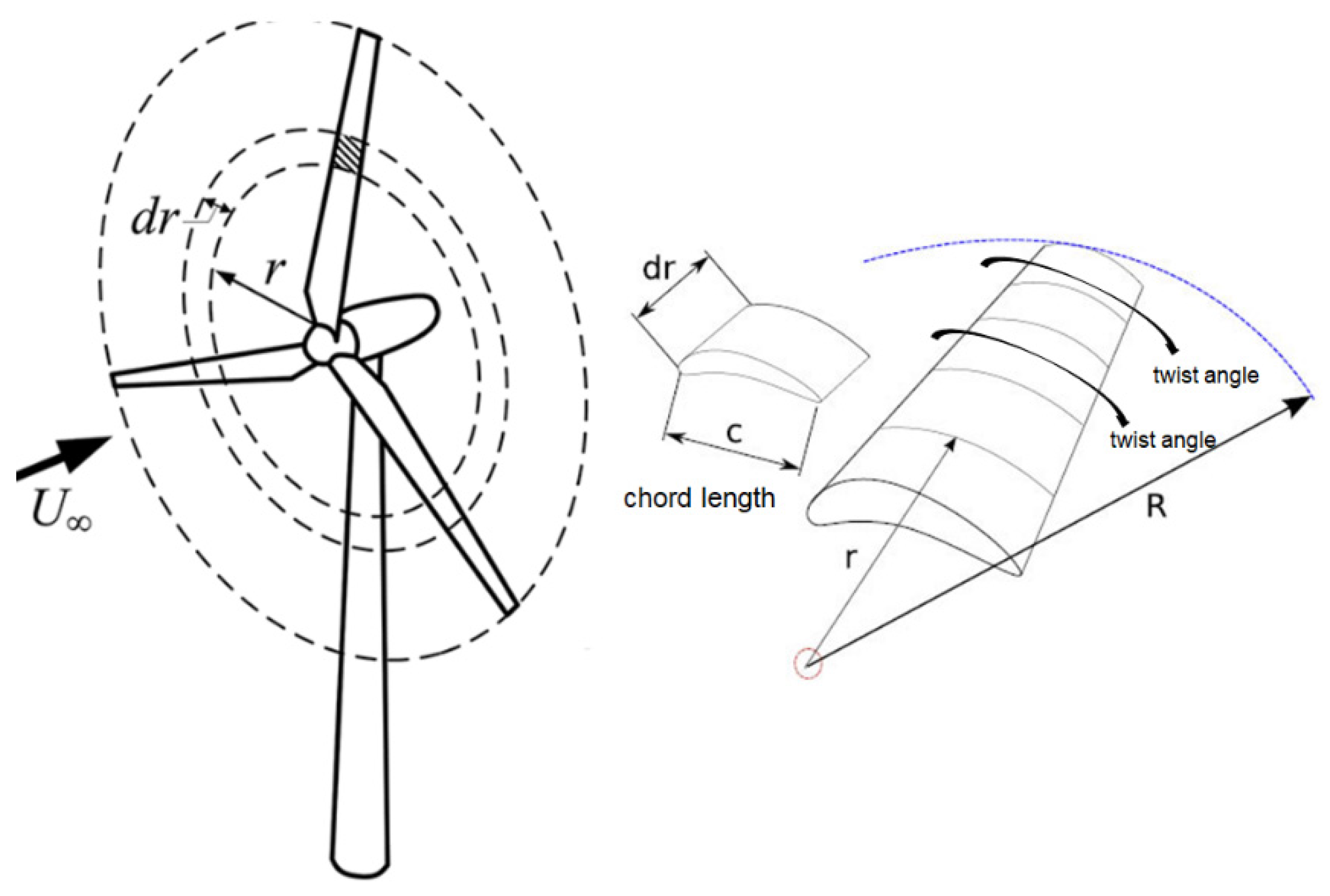
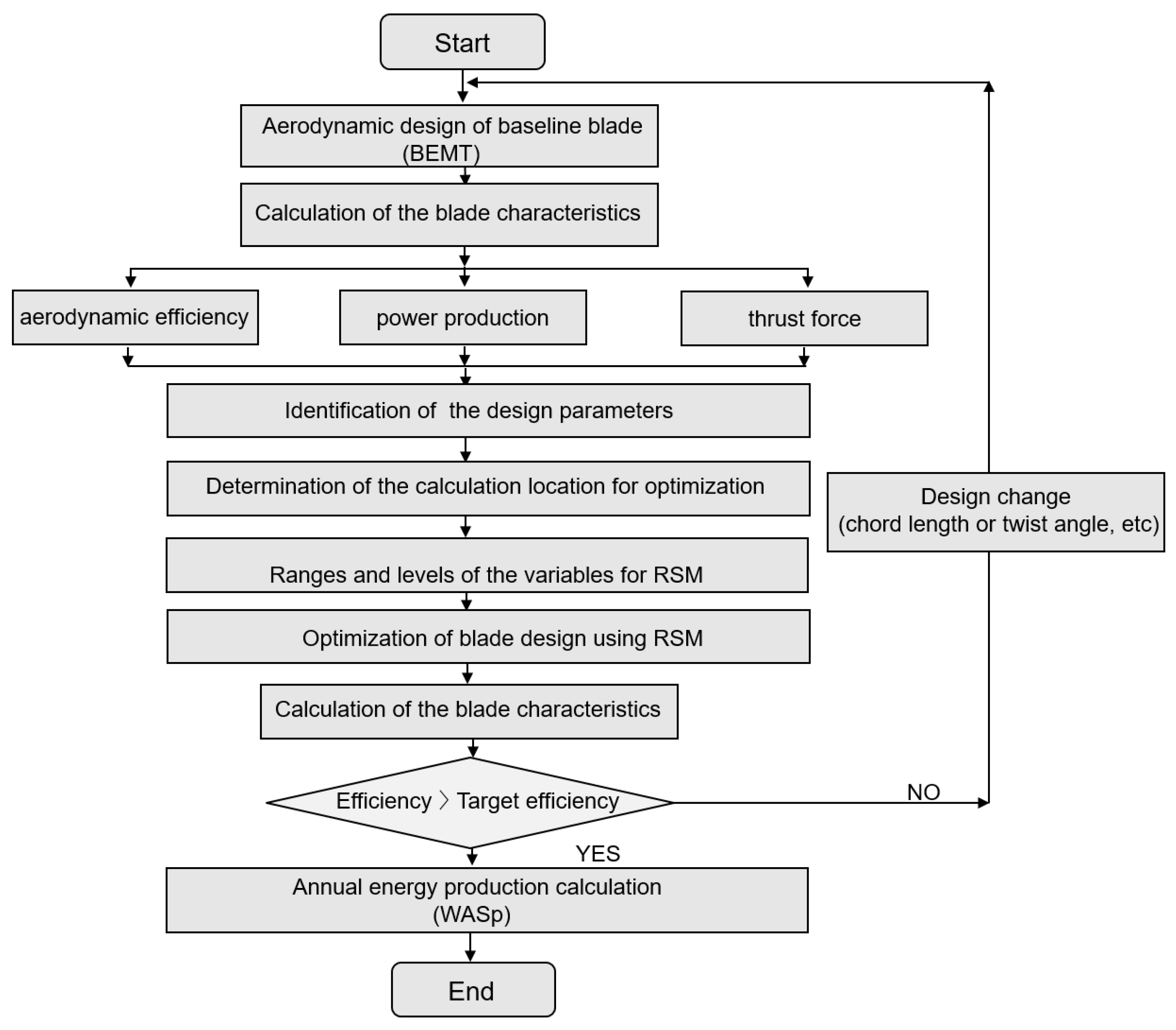
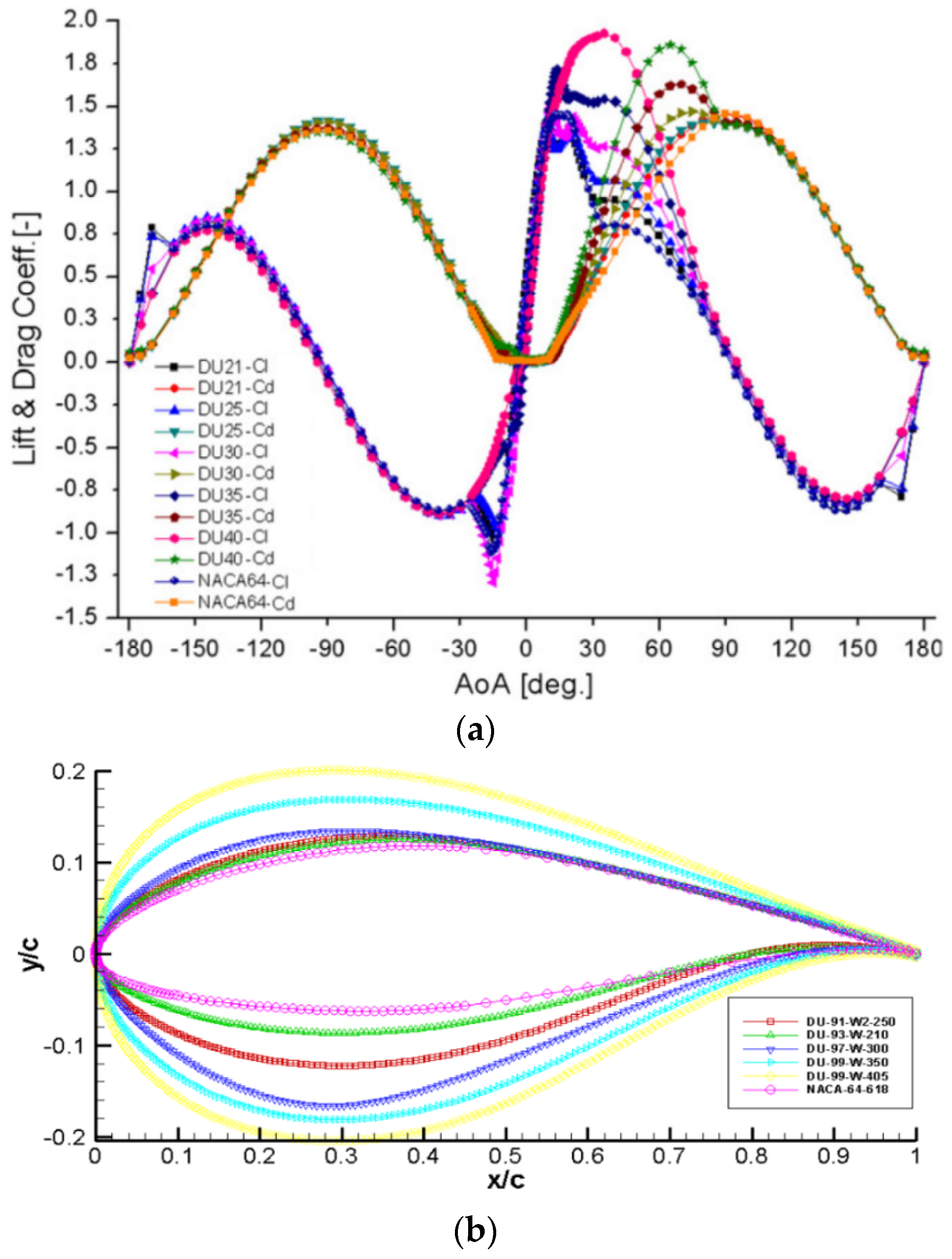
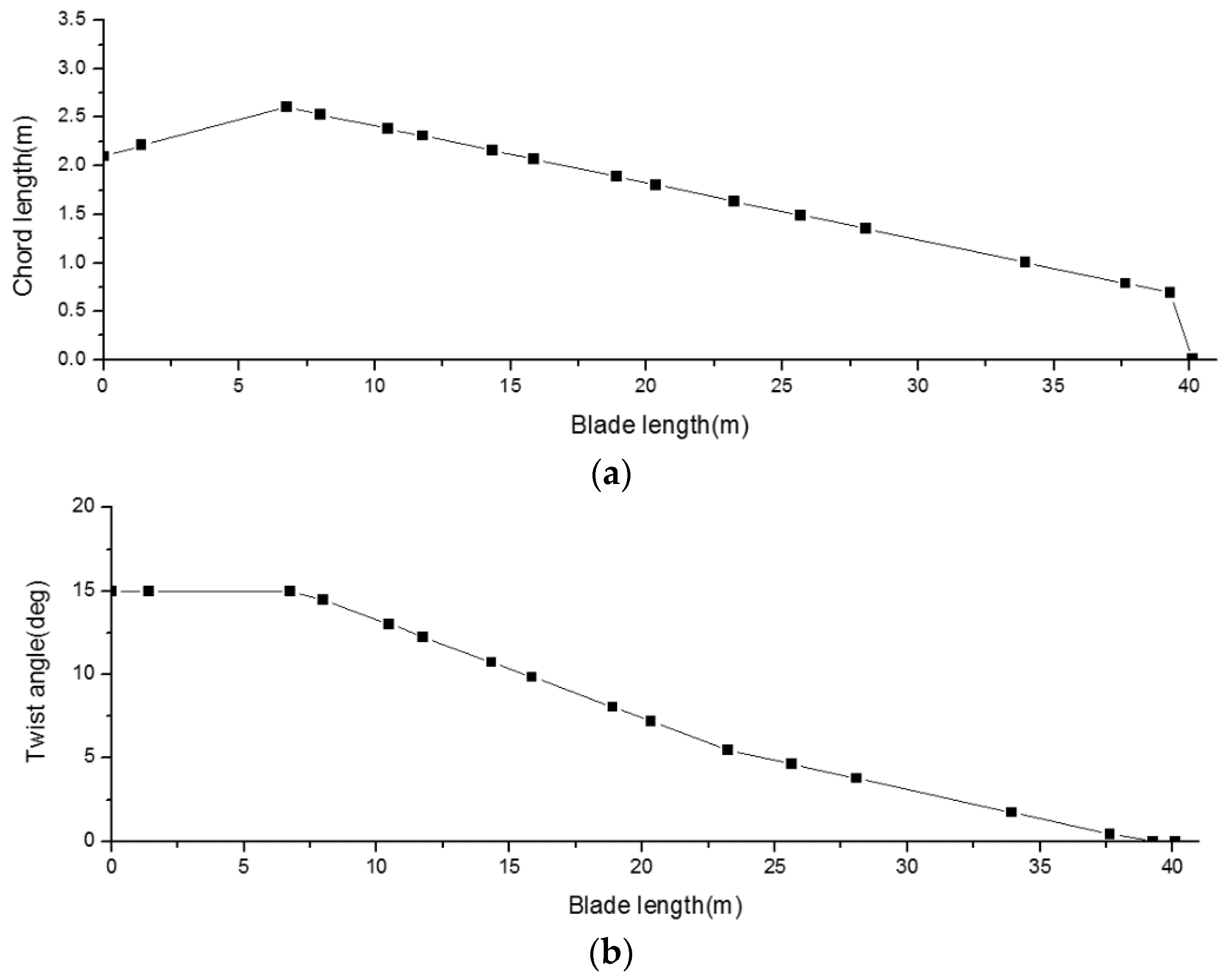
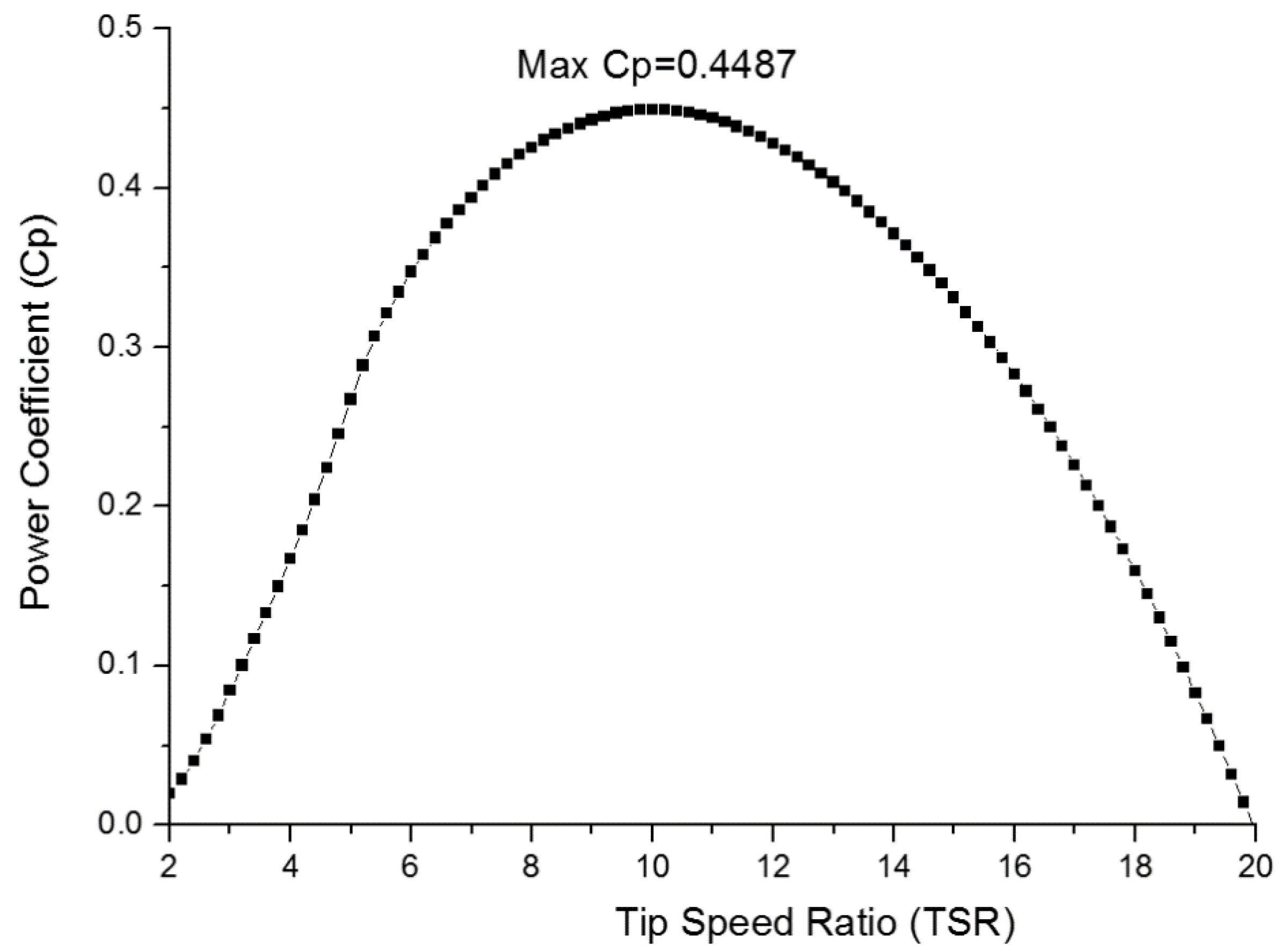

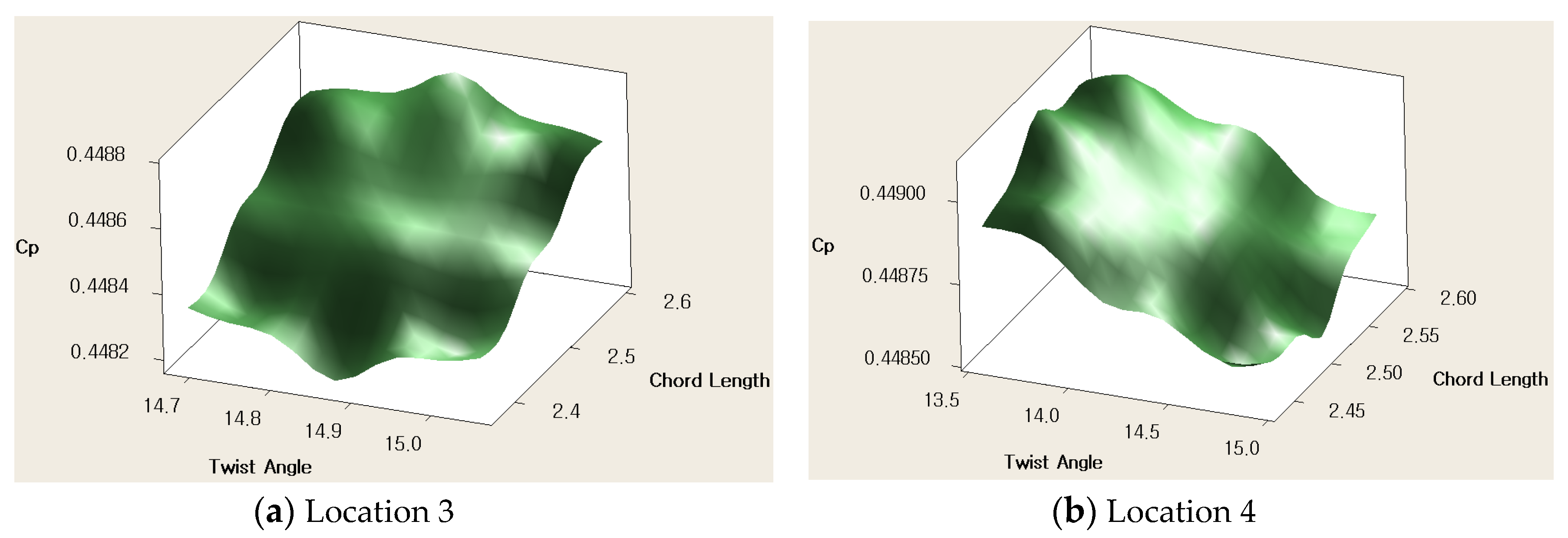
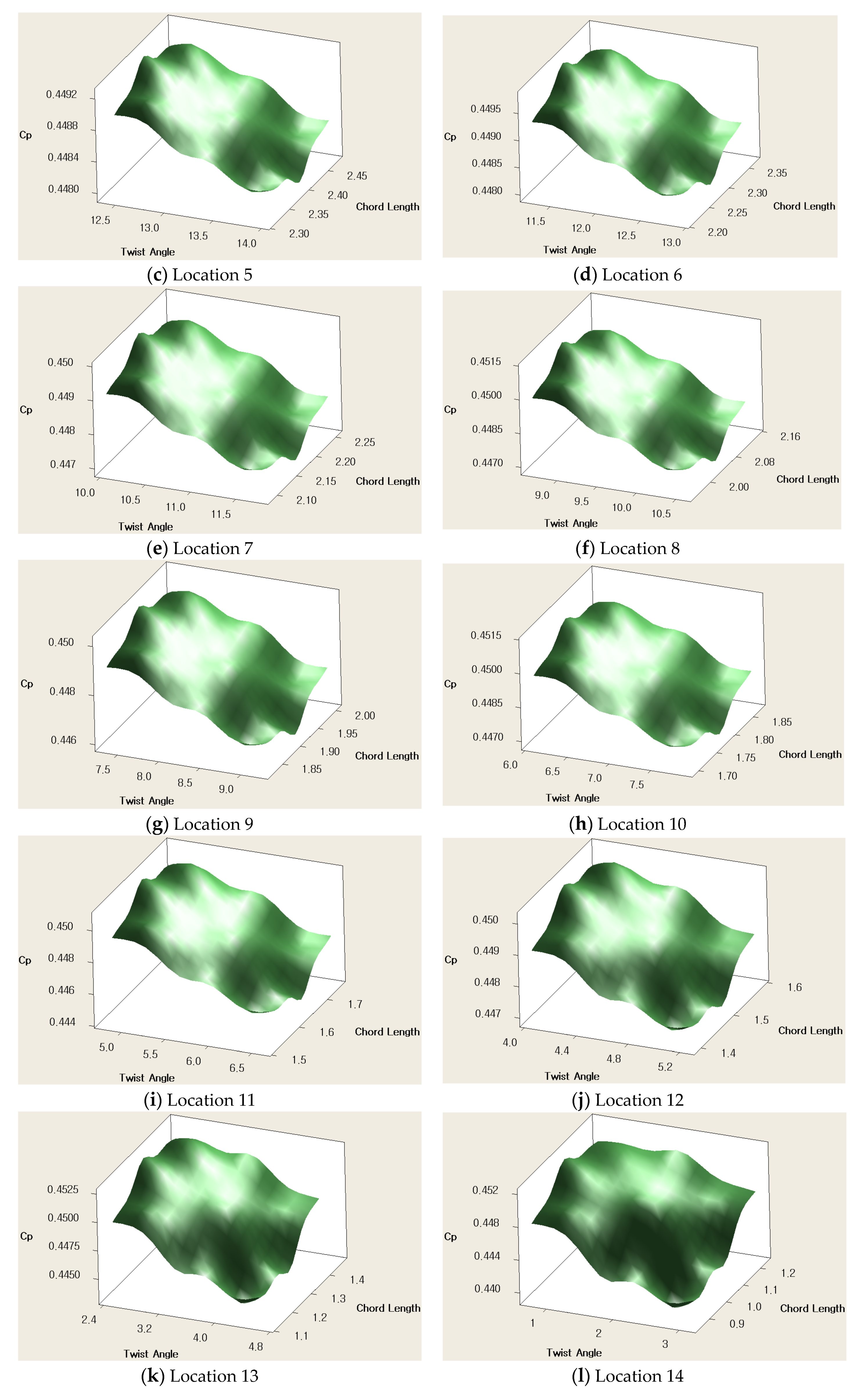

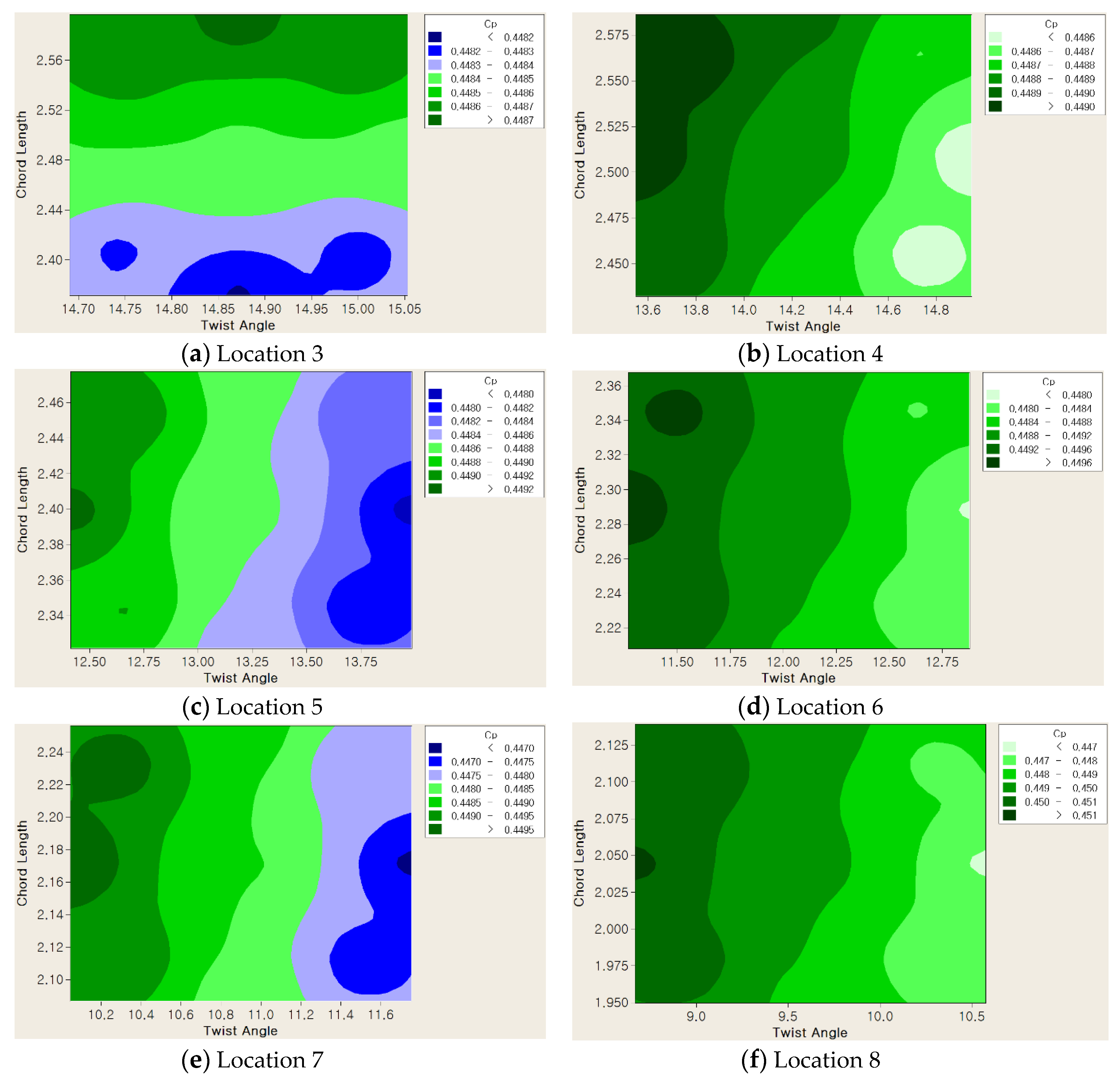
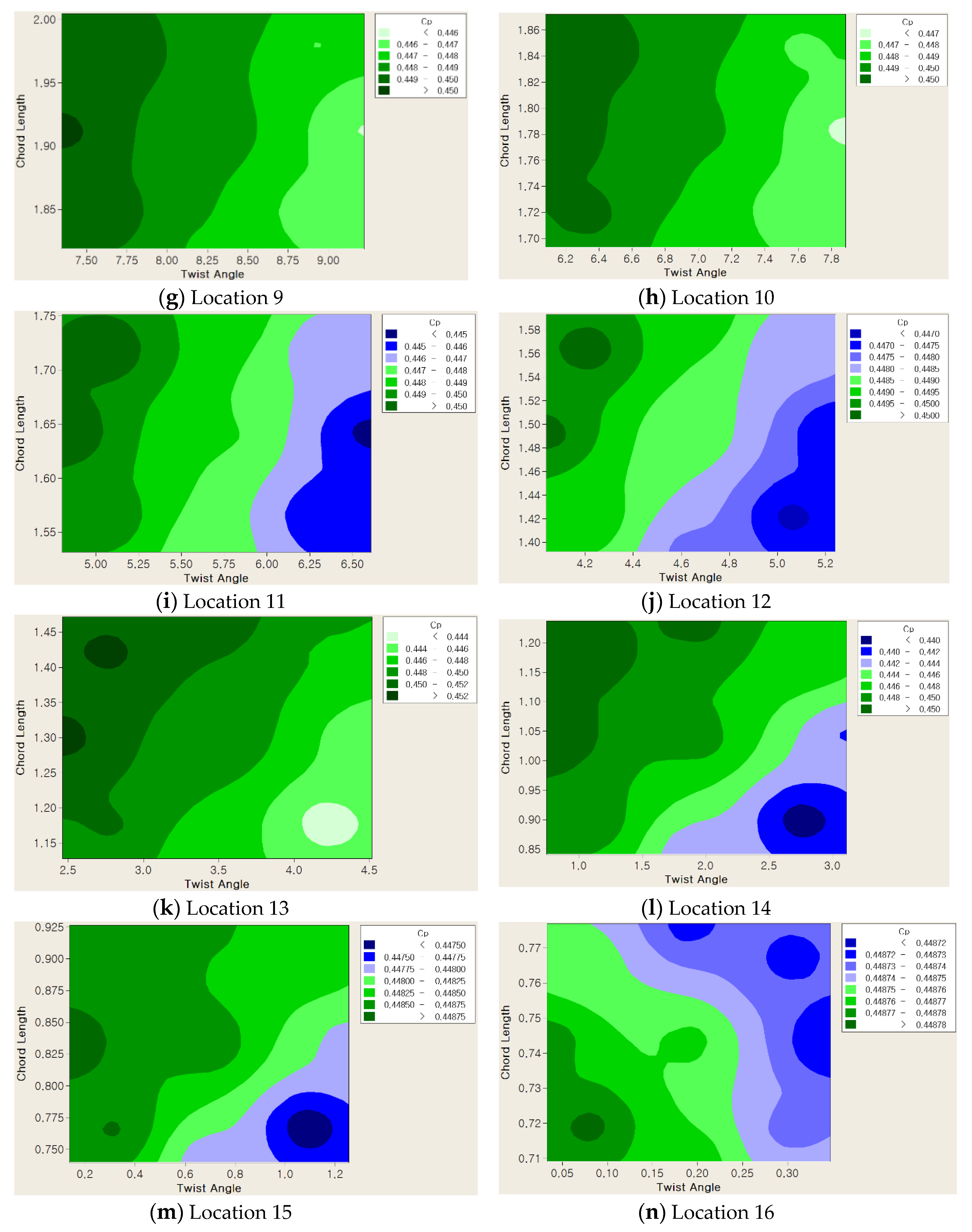
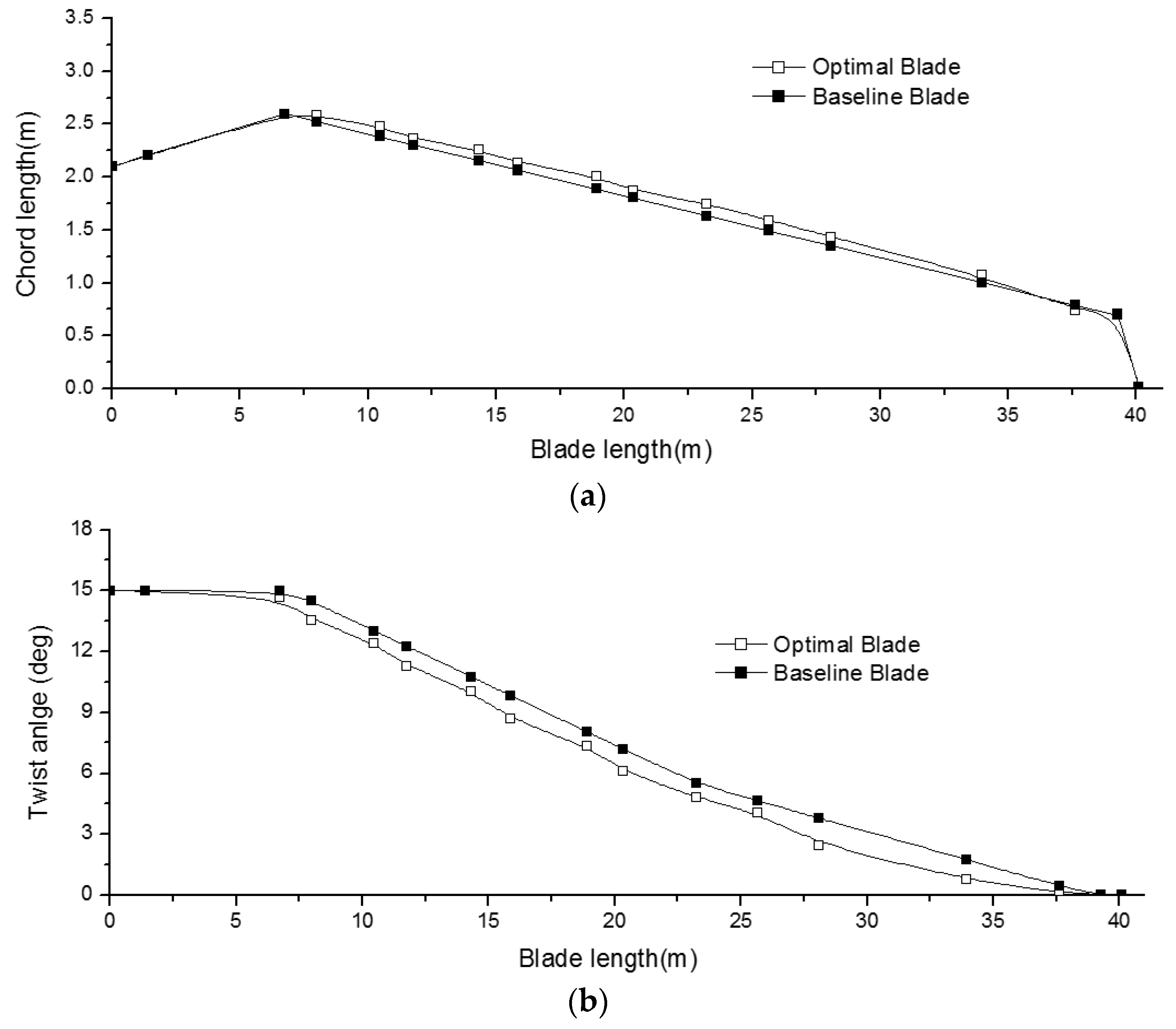
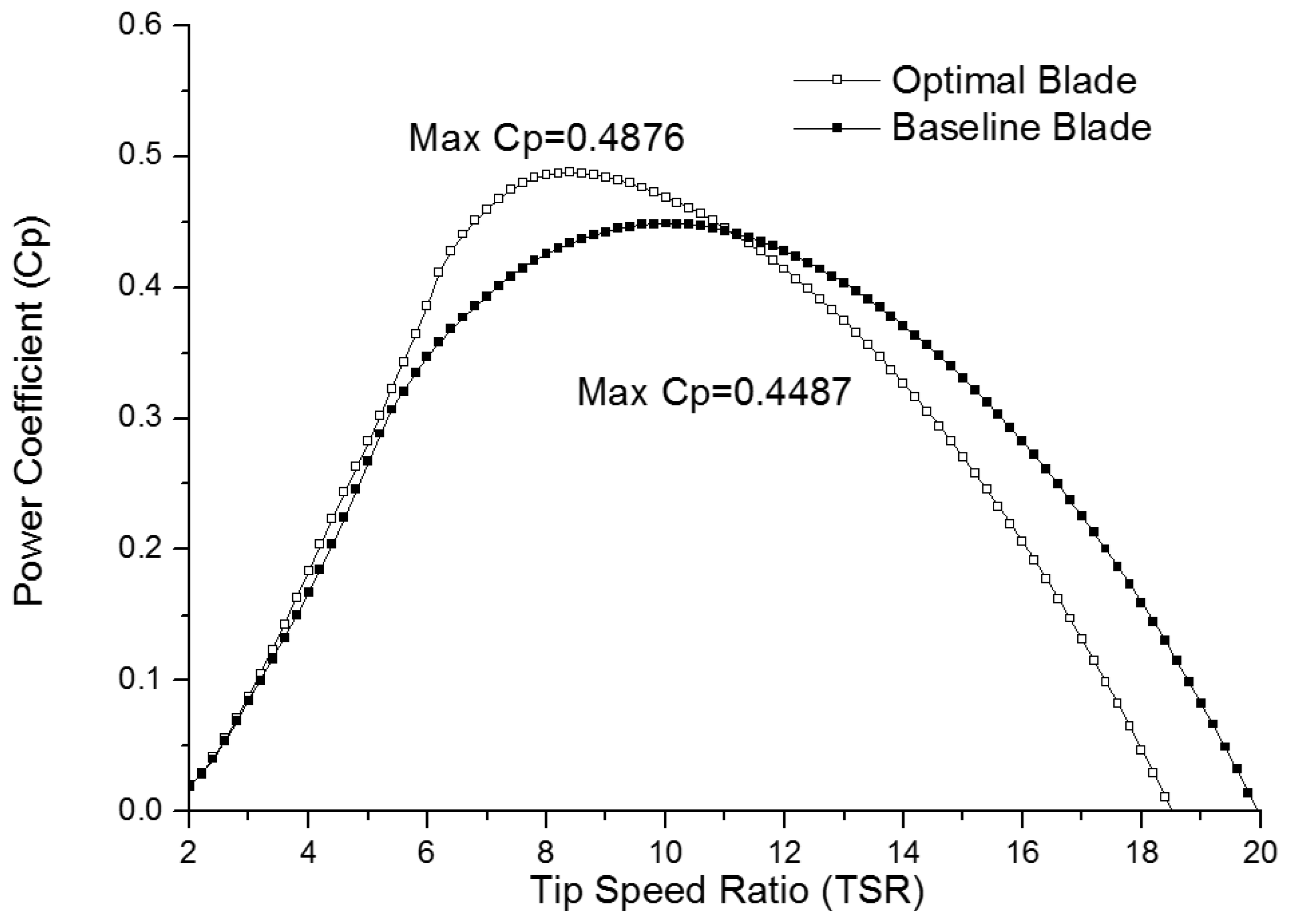
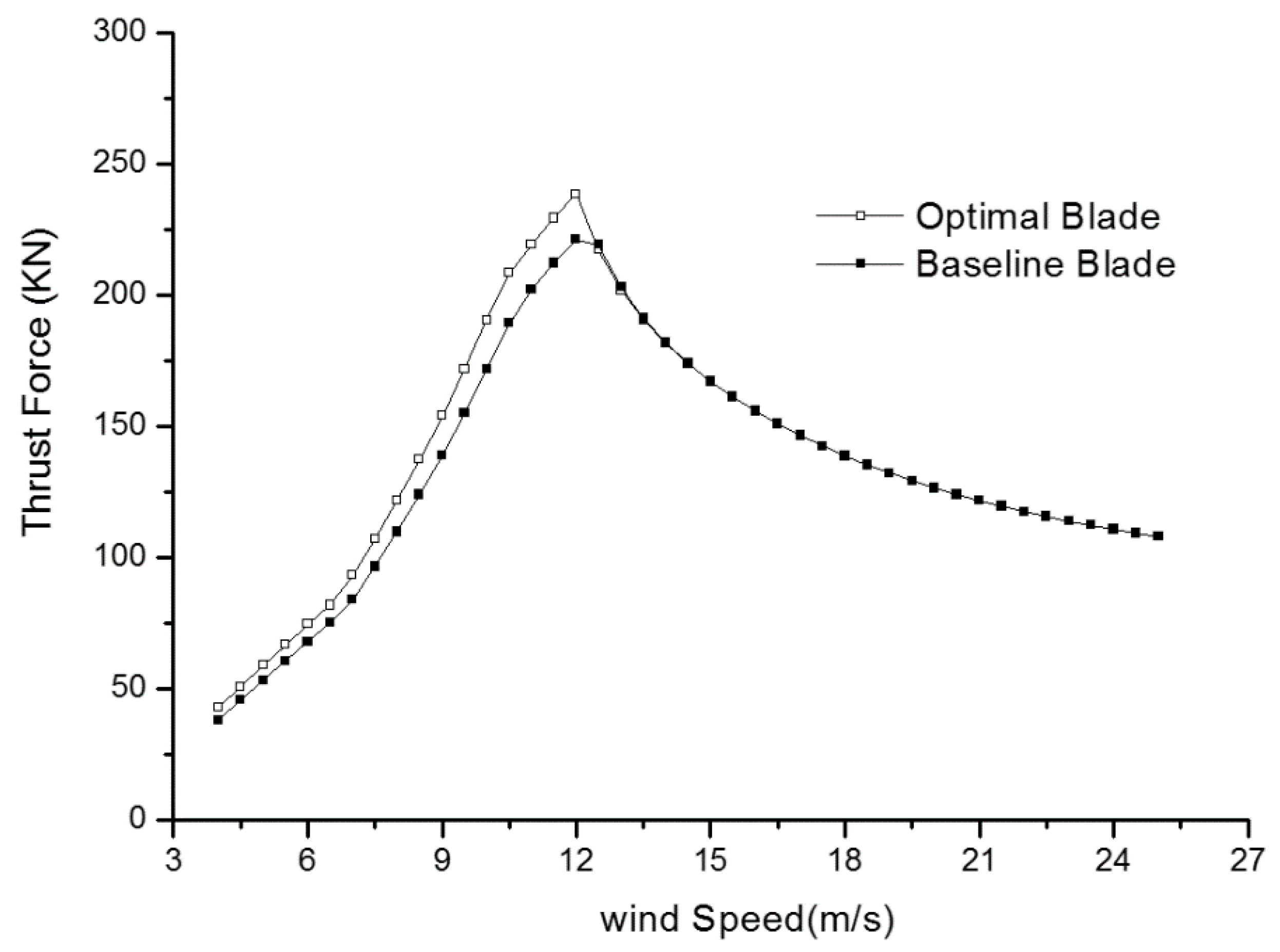
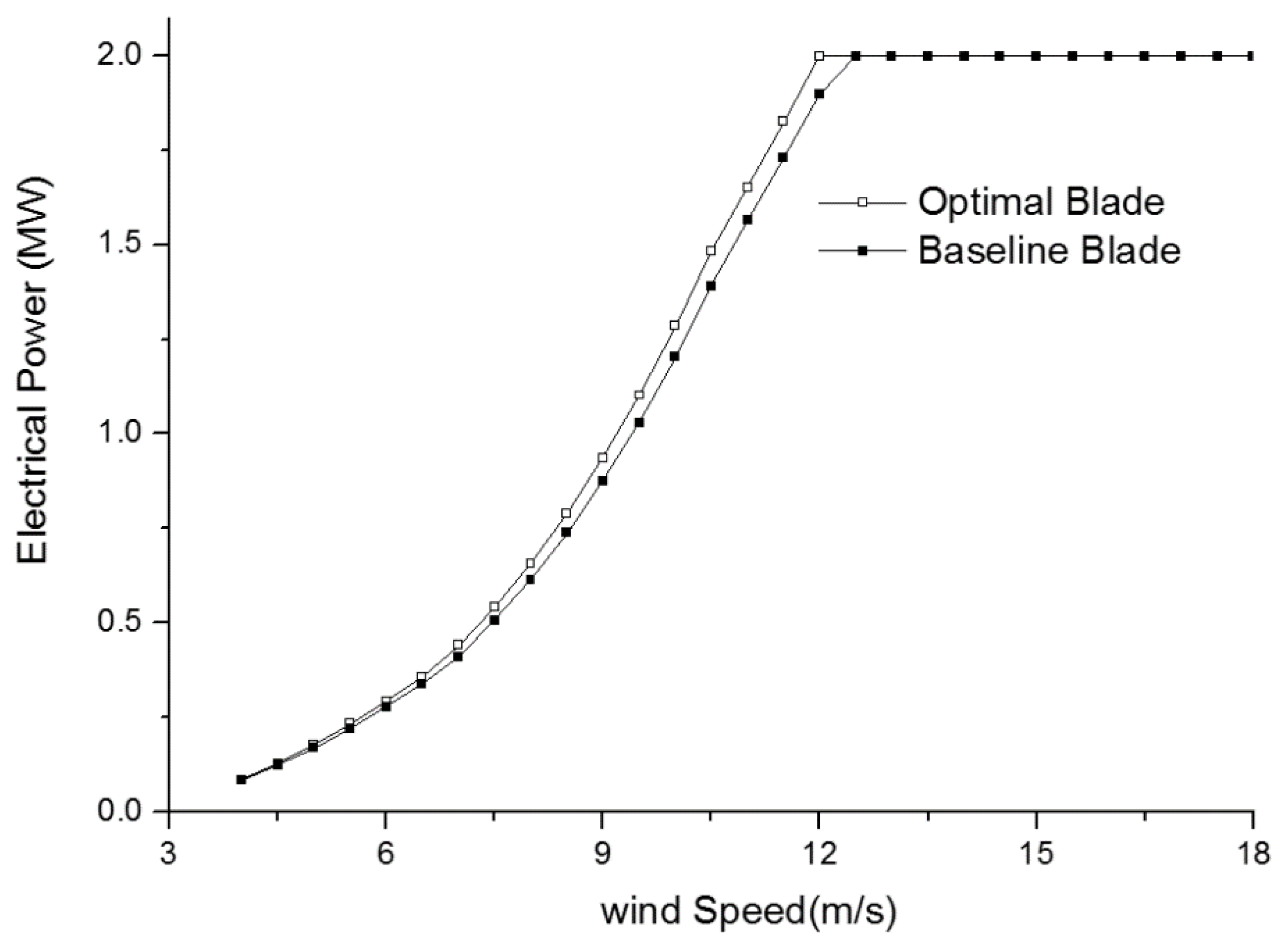
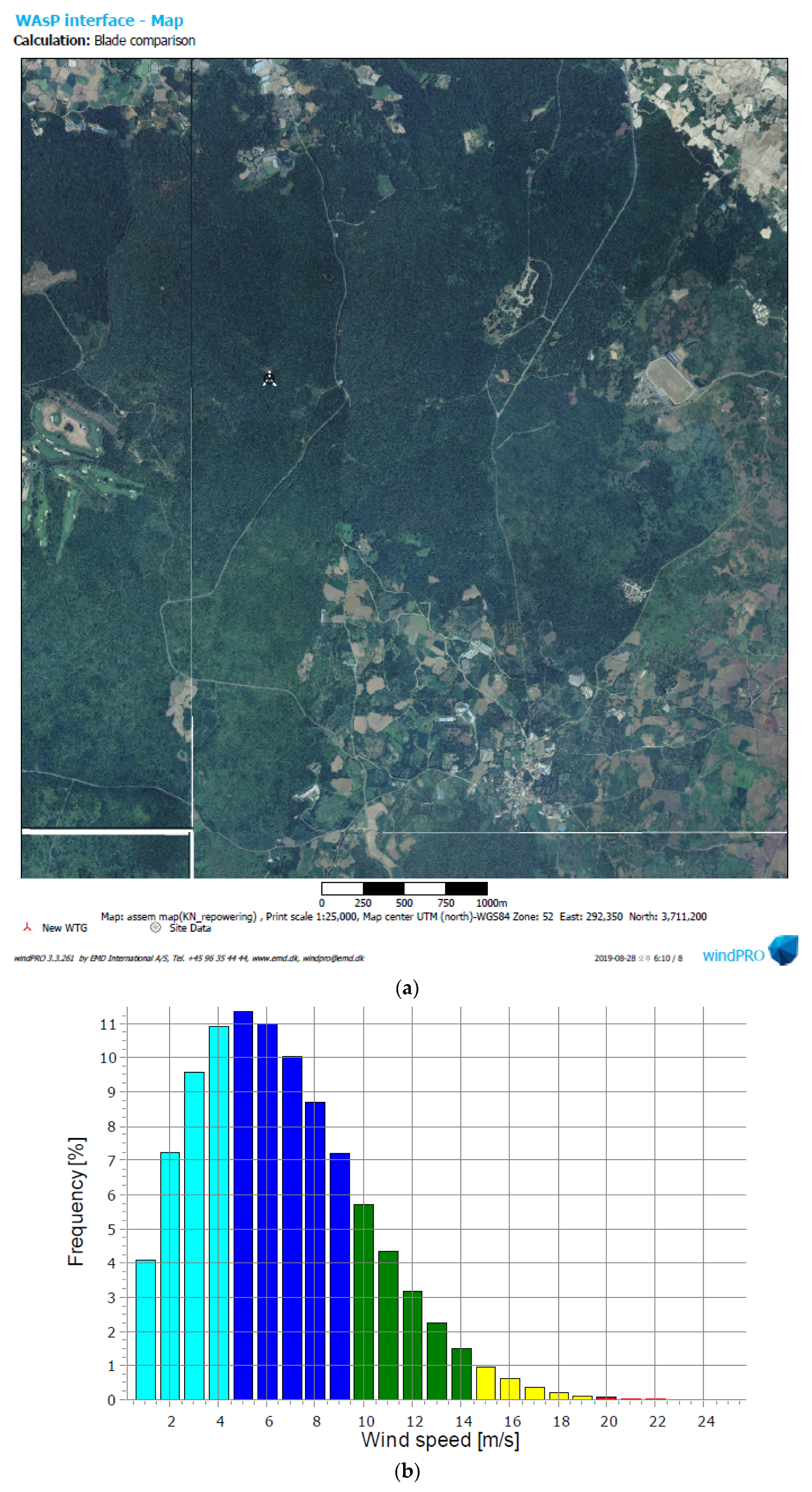
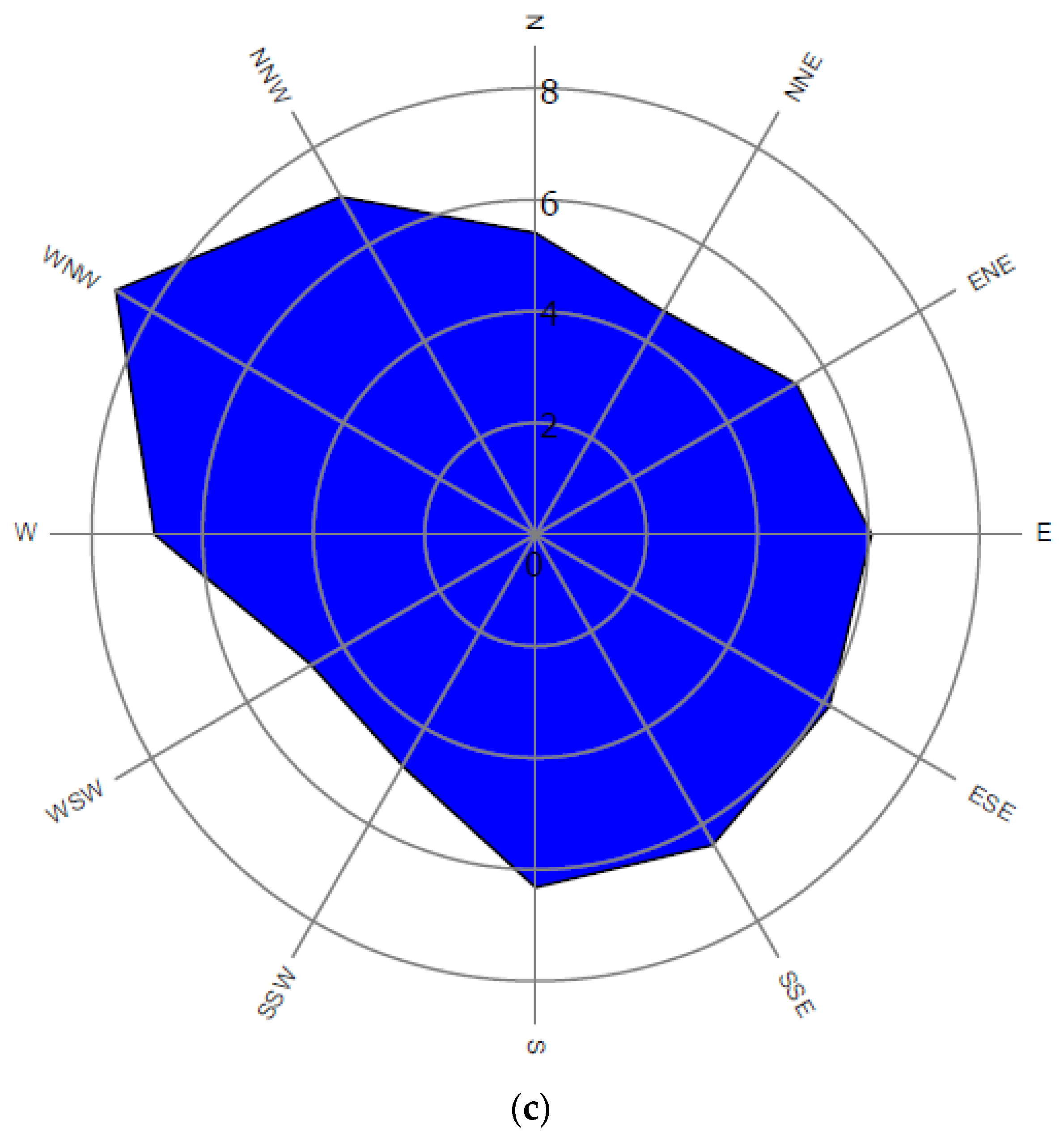
| Airfoil Number | Position [] | Airfoil |
|---|---|---|
| 1 | 0.0272 | Cylinder |
| 0.0928 | Cylinder | |
| 2 | 0.1574 | DU-401 |
| 3 | 0.2326 | DU-350 |
| 4 | 0.3177 | DU-300 |
| 5 | 0.4153 | DU-250 |
| 6 | 0.5305 | DU-212 |
| 7 | 0.6585 | NACA64618 |
| 1.0000 | NACA64618 |
| Calculation Location | Geometry | ||
|---|---|---|---|
| Distance from r Root (m) | Chord Length (m) | Twist Angle (°) | |
| 1 | 0 | 2.1 | 15 |
| 2 | 1.399 | 2.209 | 15 |
| 3 | 6.747 | 2.600 | 15 |
| 4 | 7.987 | 2.527 | 14.487 |
| 5 | 10.469 | 2.382 | 13.023 |
| 6 | 11.755 | 2.306 | 12.264 |
| 7 | 14.327 | 2.156 | 10.746 |
| 8 | 15.852 | 2.066 | 9.845 |
| 9 | 18.903 | 1.888 | 8.046 |
| 10 | 20.345 | 1.804 | 7.195 |
| 11 | 23.229 | 1.635 | 5.492 |
| 12 | 25.660 | 1.493 | 4.640 |
| 13 | 28.091 | 1.350 | 3.789 |
| 14 | 33.950 | 1.007 | 1.738 |
| 15 | 37.640 | 0.791 | 0.445 |
| 16 | 39.280 | 0.695 | 0 |
| 17 | 40.100 | 0.010 | 0 |
| Location 3 | Location 4 | |||||
|---|---|---|---|---|---|---|
| Levels | Levels | |||||
| Variables | −1 | 0 | +1 | −1 | 0 | +1 |
| Chord Length | 2.405 | 2.600 | 2.564 | 2.564 | 2.527 | 2.455 |
| Twist Angle | 15.000 | 15.000 | 14.743 | 14.743 | 14.487 | 13.755 |
| Location 5 | Location 6 | |||||
| Levels | Levels | |||||
| Variables | −1 | 0 | −1 | 0 | −1 | 0 |
| Chord Length | 2.455 | 2.382 | 2.455 | 2.382 | 2.455 | 2.382 |
| Twist Angle | 13.755 | 13.022 | 13.755 | 13.022 | 13.755 | 13.022 |
| Location 7 | Location 8 | |||||
| Levels | Levels | |||||
| Variables | −1 | 0 | +1 | −1 | 0 | +1 |
| Chord Length | 2.231 | 2.156 | 2.112 | 2.112 | 2.067 | 1.978 |
| Twist Angle | 11.505 | 10.746 | 10.296 | 10.296 | 9.846 | 8.946 |
| Location 9 | Location 10 | |||||
| Levels | Levels | |||||
| Variables | −1 | 0 | −1 | 0 | −1 | 0 |
| Chord Length | 1.978 | 1.889 | 1.978 | 1.889 | 1.978 | 1.889 |
| Twist Angle | 8.946 | 8.046 | 8.946 | 8.046 | 8.946 | 8.046 |
| Location 11 | Location 12 | |||||
| Levels | Levels | |||||
| Variables | −1 | 0 | +1 | −1 | 0 | +1 |
| Chord Length | 1.719 | 1.635 | 1.564 | 1.564 | 1.493 | 1.421 |
| Twist Angle | 6.343 | 5.492 | 5.066 | 5.066 | 4.640 | 4.215 |
| Location 13 | Location14 | |||||
| Levels | Levels | |||||
| Variables | −1 | 0 | −1 | 0 | −1 | 0 |
| Chord Length | 1.421 | 1.350 | 1.421 | 1.350 | 1.421 | 1.350 |
| Twist Angle | 4.215 | 3.789 | 4.215 | 3.789 | 4.215 | 3.789 |
| Location 15 | Location 16 | |||||
| Levels | Levels | |||||
| Variables | −1 | 0 | +1 | −1 | 0 | +1 |
| Chord Length | 0.899 | 0.791 | 0.767 | 0.767 | 0.743 | 0.719 |
| Twist Angle | 1.092 | 0.445 | 0.302 | 0.302 | 0.158 | 0.079 |
| Run | Variables | Response | |
|---|---|---|---|
| Chord Length (m) | Twist Angle (°) | Efficiency () | |
| 1 | 2.597 | 14.872 | 0.449 |
| 2 | 2.484 | 15.054 | 0.448 |
| 3 | 2.405 | 15.000 | 0.448 |
| 4 | 2.484 | 14.690 | 0.448 |
| 5 | 2.564 | 14.743 | 0.449 |
| 6 | 2.405 | 14.743 | 0.448 |
| 7 | 2.372 | 14.872 | 0.448 |
| 8 | 2.564 | 15.000 | 0.449 |
| 9 | 2.484 | 14.872 | 0.449 |
| 10 | 2.484 | 14.872 | 0.449 |
| 11 | 2.484 | 14.872 | 0.449 |
| 12 | 2.484 | 14.872 | 0.449 |
| 13 | 2.484 | 14.872 | 0.449 |
| Calculation Location | Results | ||
|---|---|---|---|
| Chord Length (m) | Twist Angle (°) | Efficiency () | |
| 3 | 2.597 | 14.690 | 0.449 |
| 4 | 2.586 | 13.550 | 0.449 |
| 5 | 2.478 | 12.413 | 0.449 |
| 6 | 2.368 | 11.269 | 0.449 |
| 7 | 2.257 | 10.045 | 0.450 |
| 8 | 2.139 | 8.666 | 0.451 |
| 9 | 2.005 | 7.346 | 0.451 |
| 10 | 1.872 | 6.079 | 0.451 |
| 11 | 1.752 | 4.801 | 0.452 |
| 12 | 1.593 | 4.038 | 0.450 |
| 13 | 1.433 | 2.463 | 0.453 |
| 14 | 1.073 | 0.745 | 0.452 |
| 15 | 0.740 | 0.138 | 0.449 |
| 16 | 0.711 | 0.033 | 0.449 |
| Distance from Root (m) | Baseline Blade | Optimum Blade | Comparison (%) | |||
|---|---|---|---|---|---|---|
| Chord Length (m) | Twist Angle (°) | Chord Length (m) | Twist Angle (°) | Chord Length | Twist Angle | |
| 0 | 2.100 | 15.000 | 2.100 | 15.000 | - | - |
| 1.399 | 2.209 | 15.000 | 2.209 | 15.000 | - | - |
| 6.747 | 2.600 | 15.000 | 2.597 | 14.690 | −0.1 | −2.1 |
| 7.987 | 2.527 | 14.487 | 2.586 | 13.550 | 2.3 | −6.5 |
| 10.469 | 2.382 | 13.023 | 2.478 | 12.413 | 4.0 | −4.7 |
| 11.755 | 2.307 | 12.264 | 2.368 | 11.270 | 2.6 | −8.1 |
| 14.327 | 2.156 | 10.746 | 2.256 | 10.046 | 4.6 | −6.5 |
| 15.852 | 2.067 | 9.846 | 2.139 | 8.666 | 3.5 | −12.0 |
| 18.903 | 1.888 | 8.046 | 2.005 | 7.346 | 6.2 | −8.7 |
| 20.345 | 1.804 | 7.195 | 1.872 | 6.079 | 3.8 | −15.5 |
| 23.229 | 1.635 | 5.492 | 1.752 | 4.801 | 7.1 | −12.6 |
| 25.660 | 1.493 | 4.640 | 1.593 | 4.038 | 6.7 | −13.0 |
| 28.091 | 1.350 | 3.790 | 1.434 | 2.463 | 6.2 | −35.0 |
| 33.950 | 1.007 | 1.738 | 1.073 | 0.745 | 6.5 | −57.1 |
| 37.640 | 0.791 | 0.445 | 0.740 | 0.138 | −6.5 | −68.9 |
| 39.280 | 0.695 | 0.000 | 0.711 | 0.033 | 2.3 | - |
| 40.100 | 0.010 | 0.000 | 0.010 | 0.000 | - | - |
| Baseline Blade | Optimum Blade | Improvement | |
|---|---|---|---|
| Rated Power | 2 MW | 2 MW | - |
| Rated Wind speed | 12.5 m/s | 12.0 m/s | −4.00% |
| Efficiency () | 0.4487 | 0.4876 | +8.67% |
| Annual energy production (AEP) | 4665 MWh/y | 4975 MWh/y | +6.65% |
© 2020 by the authors. Licensee MDPI, Basel, Switzerland. This article is an open access article distributed under the terms and conditions of the Creative Commons Attribution (CC BY) license (http://creativecommons.org/licenses/by/4.0/).
Share and Cite
Lee, S.-L.; Shin, S. Wind Turbine Blade Optimal Design Considering Multi-Parameters and Response Surface Method. Energies 2020, 13, 1639. https://doi.org/10.3390/en13071639
Lee S-L, Shin S. Wind Turbine Blade Optimal Design Considering Multi-Parameters and Response Surface Method. Energies. 2020; 13(7):1639. https://doi.org/10.3390/en13071639
Chicago/Turabian StyleLee, Sang-Lae, and SangJoon Shin. 2020. "Wind Turbine Blade Optimal Design Considering Multi-Parameters and Response Surface Method" Energies 13, no. 7: 1639. https://doi.org/10.3390/en13071639
APA StyleLee, S.-L., & Shin, S. (2020). Wind Turbine Blade Optimal Design Considering Multi-Parameters and Response Surface Method. Energies, 13(7), 1639. https://doi.org/10.3390/en13071639





